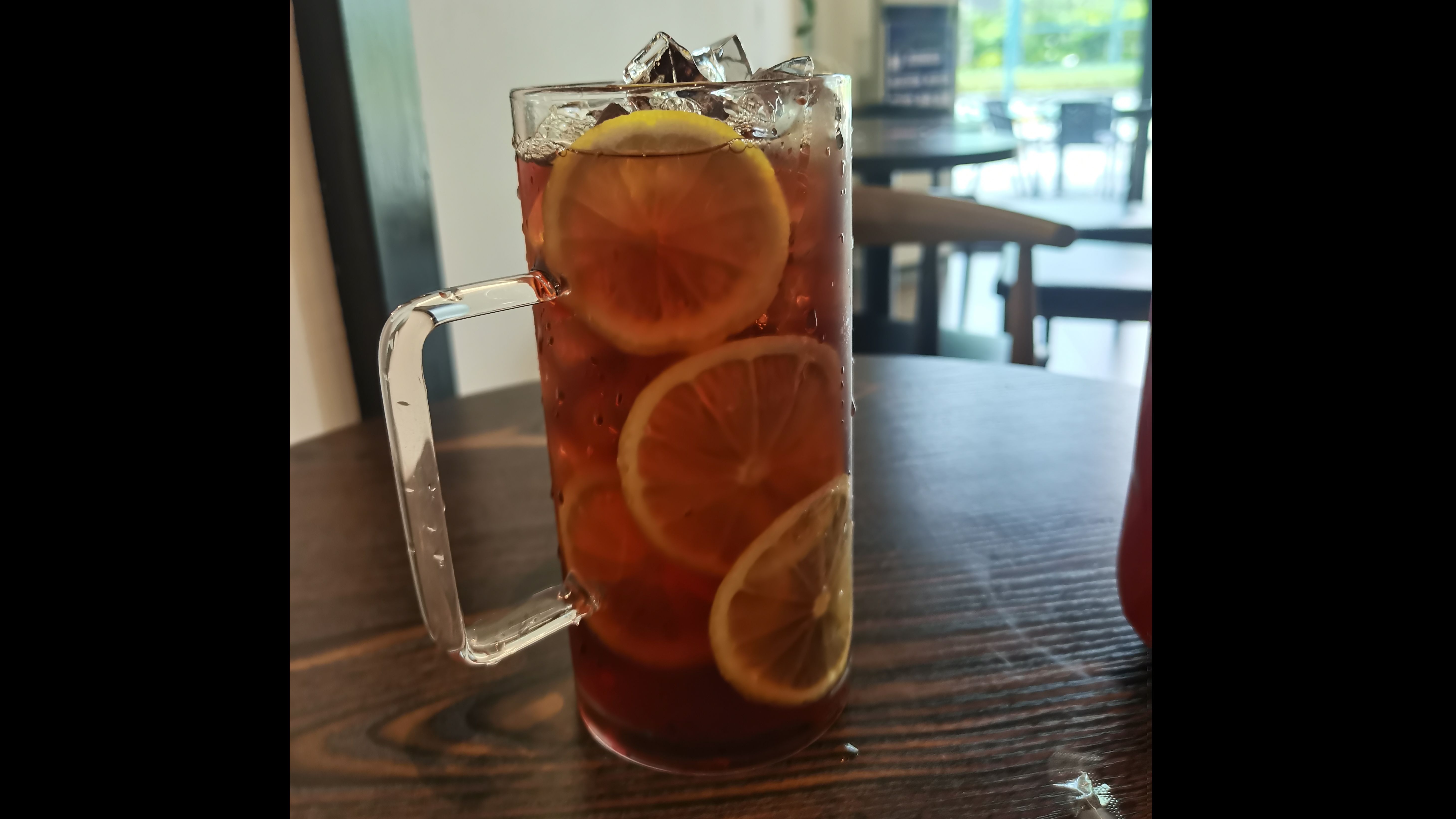On the eve of the 27th anniversary of Hong Kong's return, I held a special promotion for Hong Kong drinks in the store. I sold Hong Kong-style lemon tea for nine dollars and Hong Kong-style milk tea for twelve dollars. Additionally, based on the Hong Kong-style lemon tea, I added the unique Guangdong fragrant lemon, aptly named "New Greater Bay Area Lemon Tea," which was sold in medium and large sizes for ten and twelve dollars, respectively. On June 30th, the response was lukewarm, but fortunately, the output of lemon tea on July 1st was decent, although it did not attract as much attention as I had hoped. Perhaps the promotion was not effective enough, especially since the store's location is not particularly busy.
Back to the main topic, what I want to share with readers and pen pals this time is my exploration and learning journey regarding Hong Kong-style beverages. Before I started working, I loved dining at Hong Kong-style tea restaurants, enjoying dishes like French toast and pineapple buns, and I couldn't do without a cup of Hong Kong-style milk tea or lemon tea. However, I was only concerned about which places had good food and drinks. After I started working, I didn't develop an interest in making these drinks. Initially, my design work did not improve, leading me to switch to the tiring and low-paying restaurant industry, which was often taken advantage of by others. In the end, working meant that others paid me to help them, so when the old staff informed me about the workflow, I naturally had no interest in sourcing raw materials.
My first encounter with Hong Kong-style milk tea was at a lemon tea shop called "Guanren Tea" located in Jiangnan West. Although the brand's signature product was hand-made lemon tea using the unique Guangdong fragrant lemon, the tea leaves used were actually broken black tea meant for making Hong Kong-style milk tea. The tea base was made by soaking the broken black tea in boiling water for 45 minutes at a certain ratio, then straining the tea leaves using a large cotton bag. The resulting tea was poured into two large teapots, repeatedly poured back and forth dozens of times, and then left to cool to room temperature. When making lemon tea, one part of this tea base was mixed with two parts of water. As for the preparation of Hong Kong-style milk tea, it involved six parts tea to four parts evaporated milk, with an appropriate amount of fructose stirred in evenly, and ice cubes added to the serving cup before pouring in the milk tea. I tried it myself, and it was indeed almost indistinguishable from the Hong Kong-style milk tea I used to drink in tea restaurants, but it seemed to make me more prone to tea intoxication and insomnia.
Later, I felt that the shop's business was not doing well, so I resigned. Even being promoted to assistant manager was not a long-term solution. Eventually, I worked as a front desk salesperson at a Brazilian jiu-jitsu gym, which provided a semi-professional training environment. To lose weight, I stopped drinking frozen beverages, but later I injured my left knee during training, which halted both my work and training.
